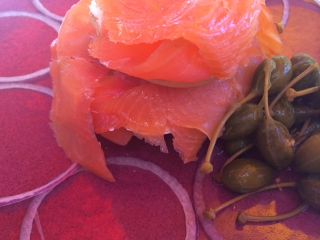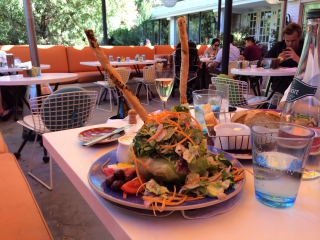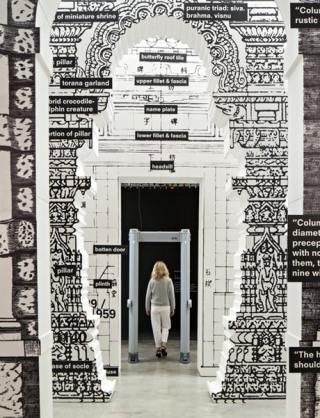

 |
Product Info | BlackPaste &neo 2015-03-24
|
 |
A Japanese Burger Chain Made Face Masks So Women Can Eat Burgers Elegantly What other 'normal activities' can we mask with such a paper façade? Can a &Rob 2013-11-06
|
 |
Yeah, normally you'd need to spend over a $mill to get this sort of performance. &PBWino 2013-08-11
|
 |
Push Pop Containers - Don't Spend $1 Before You See This &neo 2018-08-31
|
 |

From the Architects: Zaha Hadid Architects Location: Baku, Azerbaijan Design: Zaha Hadid, Patrik Schumacher Project Designer And Architect: Saffet Kaya Bekiroglu Client: The Republic of Azerbaijan Area: 101801.0 sqm Year: 2013 &Rob 2014-02-15
|
 |
&neo 2013-08-17
|
 |
wow congrats &zerotoinfinity..you've achieved creator status in a matter of days. Normally it would take a few lifetimes... &neo 2013-08-24
|
 |
An intriguing discussion is worth comment. I feel that you need to write alot more on this topic, it may possibly not be a taboo subject but normally men and women aren't enough to speak on such topics. To the next. Cheers cheap louis vuitton handbags &cheap louis vuitton 2013-08-08
|
 |
Seems to all be wrapped up in such a nice neat box. Nothing more to see here at all, please move along. You're implying it's not normal for someone who drives that neighborhood on the reg to be going more than twice the speed limit, flying through light(s?) and then yank a hard left into a tree? At which point one of the world's best cars blows up like a balsa wood structure? &zerotoinfinity 2013-08-22
|
 |
Olympic Athletes May Use iPhones Without Restriction During Opening Ceremony Says IOC 
No it is not true. The &Rob 2014-02-06
|
 |
We need to talk about normalizing hashtags...I'm using Daily_xxx and you're preceding with the noun.. &neo 2013-08-18
|
 |
&neo 2013-10-19
|
 |
Just before the weekend, the National Park Service informed charter boat captains in Florida that the Florida Bay was "closed" due to the &neo 2013-10-07
|
 |
Tendon and Ligament Regeneration and Repair: Clinical Relevance and Developmental Paradigm Decades of research on tendon and ligament (T/L) injuries have yielded extensive knowledge of the mechanical and biological properties of these dense connective tissues, translating into advances in surgical and conservative therapies that can prevent major disability. However, T/L injuries remain a persistent clinical challenge. In the U.S. alone, tendon, ligament, and joint capsular injuries account for 45% of the 32 million musculoskeletal injuries each year (Butler et al., 2004), with rates rising due to increasing sports participation and an aging population. Unfortunately, current treatment strategies fail to restore the functional, structural, and biochemical properties of repaired T/L to those of native tissue. Consequently, the principal elements of tissue engineering cells, scaffolds, and bioactive molecules have been explored in an effort to improve T/L healing. Both in vitro and in vivo studies have expanded the understanding of T/L biology while demonstrating the utility of tissue engineering in enhancing the healing of musculoskeletal tissues. Nevertheless, no tissue engineered construct thus far has achieved complete regeneration of T/L. In response, tissue engineers are looking to the emerging understanding of T/L development in an effort to recapitulate the embryonic events that establish the native structure (Thomopoulos et al., 2010). While researchers are only beginning to explore methods of integrating developmental biology into the design process, such efforts may advance the field of T/L tissue engineering towards its ultimate goal, full restoration of normal mechanical and biological properties (Lenas et al., 2009a). In this review, we will begin with the present understanding of tendon development. Ligament development has not received as much attention as that of tendon, but lessons learned from the latter should be applicable to the former, as tendons and ligaments possess similar ultrastructure and physiology, as well as fulfilling similar functional roles (Tozer and Duprez, 2005). The natural healing cascade of T/L will be summarized, as current therapeutic approaches to the three most common tendon injuries tears of the rotator cuff, Achilles tendon, and flexor tendon of the hand will be reviewed. Next, an overview of the current tissue engineering strategies to improve tendon healing, including cells, growth factors, scaffolds, and mechanical stimulation, will be provided. In closing, we will briefly explore the current limitations to tendon and ligament regeneration before offering future directions to address these challenges. &neo 2017-11-14
|
 |

Lunch at !Norma, part of the !Parker resort in &Rob 2014-02-10
|

!Norma is the 5 star &Rob 2014-02-09
|
 |
&Neo 2013-08-14
|
 |

" Now in his 70th year, Koolhaas is bristling with more impatience than ever. Together with his office, &Rob 2014-06-09
|
 |
Scientists have found that CBD can restore the memory of mice with Alzheimer's disease back to normal levels. &neo 2014-07-26
|
 |
"There are more people coming across the border than we sent to invade France in World War II &neo 2014-07-16
|
 |
The &neo 2016-04-06
|
 |
Microbiome: Gut Bugs and You | Warren Peters | TEDxLaSierraUniversity - YouTube When I was just a little boy when I used the toilet, my mother taught me to wash my hands, and when I flushed and I looked at what was going down, I'd go, boy, you'd better wash your hands, you know? And I had this little puppy, you know, this little dog, and when I saw what came out of his body, and if I stepped in it, I'd go, boy, I'd better wash my hands. And my mother taught me all about germs and how bad they were, and you should always wash your hands, and I believed her. And then I grew up and I went to medical school, and we had the microscope. And we looked at these bacteria, and we heard these stories about how they caused these epidemics, and people dying all over the place, and then antibiotics came aboard, and now we could actually stamp out these epidemics of these bad germs. And then, all of the sudden, I started hearing about the good bugs, and I go, "What's that?" And as we began to look at the actual genetics, this was the breakthrough that allowed us to actually understand our microbiome, particularly in our GI tract, because when I was just looking at them through a microscope, it was very limiting. You could only see just certain kinds, but now that we could actually genetically look at this - this all started about ten years ago, and many of you are familiar with this - when they started looking at the genetics of the human, what are the genes? How many genes? What are the genes that we have? Through incredible research, it became apparent that we actually had, like, 26,000 genes. And I thought, wow, that's really cool, and everybody was studying the genes and this was really wonderful, until they started studying the genes of a rice plant. The rice plant had 46,000 genes. What's that?! You know, I mean, we're only 26 ... and they're 46?! And so this was very humbling to say that the rice plant was more sophisticated than humans. So then about five years ago everybody got busy, and they started to do the genome of the bacteria that resides inside of our body. Guess how many genes there are there. 100,000 genes. And so we began to look at, what are these bugs? Who are these? What are these? So there's, like, 100 trillion of them. When we think of cells of our body, our biome describes 90 percent of all the cells. We're only ten percent. So we just heard how wonderful it is to look at the astronomy and be humbled. I would suggest we probably just need to look inside of us and really get humble because "the other" is way beyond this. So these genes are incredible - there's about 1,000 different varieties, and then when we look at the species and sort of like that, it's incredible how diverse this whole environment, this whole biome is, and just resides in some just humble you and me. Well, okay, let's team up with our bugs. So we're 26,000 and they're 100,000. Wow, now we can trump the rice plant, (Laughs) so we better stay joined with them. So we begin to do - what actually does this biome do for us? So we first think of fermentation - talk about a microbrewery, you know, right here in our right colon, right here, these bugs are actually fermenting because this does a lot of good things, and they produce about the equivalent of a can of beer every day. And, yeah, that's true. (Laughs) And so, of course, we handle it quite nicely and so on, we don't get tipsy with that much. And so in this process of fermentation, some very important things are created; they're called short-chain fatty acids. These short-chain fatty acids are critical to our immune system. So if you breed a little mouse that has no biome, this little creature is very vulnerable to infections and so on. And so in many ways, this is quite dramatic, and we wonder, where does this biome come from? Because the little human, when he's just inside the uterus, he doesn't have a lot of bugs - this has been kind of coming in question here, like, right now - but so far, we've always thought of it being kind of sterile inside there. But when this little child goes through the birth canal and is breastfed, that is where the microbiome starts. This is critical to the life of this child, and our C-section babies and our babies that don't get breastfed, this is very difficult, so now, in modern places and hospitals that understand this, if the little child has to be born by C-section, a vaginal swab is actually taken and placed in the child's face and mouth so that they can actually become a mirobiome-positive creature, otherwise the immune system would not develop. So this is very, very vital, so that's kind of the positive side of the fermentation. But there's a negative side to this, and this is where - remember all these cells, these thousands of different kinds of bacteria - like most of life, it's about a balance, and when they are not balanced, we call it a dysbiosis. When that begins to happen, we find that it starts causing diseases. You know the word "irritable bowel syndrome"? Some of you may actually have it - you know, diarrhea, constipation, abdominal cramps, all these kind of things. You know about colitis, you've heard of people that have colitis. These kinds of things are when there is a dysbiosis, there's an imbalance between the good bugs and the bad bugs. Also, we're beginning to understand that a lot of the - what is called - autoimmune diseases, such as rheumatoid arthritis, multiple sclerosis, these kind of things may indeed be associated with an imbalance in our microbiome. So another things that our bugs do is they harvest calories. Now, if you're starving to death, and you're having to eat a lot of grasses and grains, and things that have a lot of fiber, your body can only absorb a certain number of calories, and we can't absorb, normally, any calories from fiber. Fiber just goes down to the biome, and the biome actually will harvest from the fiber, will actually harvest an extra 10-15 percent of the calories from that food we've eaten. This is how humanity has survived very, very severe circumstances. But just as there's a positive, there's also a negative. And we find when we look at this whole obese area, people who are overweight - Anybody have any deficit of calories? Lunch looked pretty good, didn't it? So we're not living in a cave anymore and we're not starving. So this good thing can then become a bad thing, particularly if we tend towards these particular kind of bugs, they're called Firmicutes - it's a big family group - and they harvest extra calories, so when we actually look at the biome of people who are overweight or people who have diabetes, they tend to have a lot more of this Firmicutes family. Are you following me? Do you see where this is starting to lead? What if we begin to change the biome to a more balanced biome for people that were overweight? Ha! You know how this is going to go, don't you? And the studies are already being done in mice, (Laughs) but you know, there's a lot to this. So this study came out about two years ago - it was a fascinating study - because they took these skinny, little mice and they just gave them an artificial sweetener, and sure enough, the little, skinny mice became fat and became diabetic. So then the obvious scientific question is, did the artificial sweetener change the metabolism of this little mouse, or did it change the microbiome? Guess what? So they did this elegant study - if you think of fecal transplant as elegant - and they took other little, skinny mice, and they just did a fecal transplant from the heavy mouse that had diabetes, no artificial sweeteners, and that little, thin mouse became obese, and overweight, and diabetic. So you begin to see how this science is beginning to progress. And a third area that I think is very critical is what we call the gut-brain axis. And when you look at animal studies, you can take, again, these little germ-free mice, and when they're born, they're kind of autistic. You know, they don't kind of hang out with their puppy brothers and sisters, and they don't eat well, and they don't do things well, and they're kind of autistic. But if you then transplant normal mouse biome into these little guys, they become normal, they just kind of hang out with each other and so on. You can see where this is going, can't you? (Laughs) And sure enough it's already happening. So in Europe, there's some beautiful studies that are being done on humans. Here in America, there's some people that on the side are giving probiotics, you know, probiotics have the microbiome in them - probiotic enemas - to autistic children, and actually seeing some development. I have not seen good randomized controlled trials, but where there's a little smoke, there definitely can be some fire. Now in the human studies, one of the things that we want to know - so we already know that the gut affects the brain, but we also want to know, does the brain affect the gut? And sure enough, when we find people that are under high stress - of course, nobody here in the audience, I'm sure ... high stress ... you know ... that must be someplace else - but under high stress the biome actually changes. And what we find is that there's a breakdown. So inside the gut there's a nice little layer of mucus - so you have all this bacteria and here you have your gut wall, and then this first layer of mucus, there is no bacteria, it's a barrier. The next layer is another layer of mucus that does have bacteria in it, and under stress, those mucus layers begin to break down, and antigens from the bacteria actually penetrate into the muscle wall and therefore into our circulation. So this barrier is broken down. And there's a great deal of study that's going on now to even look at microbiome and Alzheimer's. Alzheimer's is now being called diabetes type 3, because we know that those high insulin levels, those high sugar levels, all these things may well be contributing. So at first I thought, well, this is a little fringy, but when I began to see that we have neuroscientists that have linked together - 30 neuroscientists in the Scientific American just published an editorial saying we need to take another look at Alzheimer's disease in relationship to the biome. So let's kind of think about how we can feed this biome. What are the nutritional features that we can do to help our own biome? So, first of all, we have the refined carbohydrates and the processed foods. You're probably aware that of the 600,000 foods that are manufactured in America today, 72 percent of them have added sugar. That did not happen by accident. Sugar is addicting. That processed food is beginning to actually alter our biome to make us less and less healthy. So obviously, I teach my patients to just - when they go to a grocery store, just shop around the periphery where they have real food - well, except for the deli maybe - but real food, don't go into that sinister middle section unless you need toilet paper or something. But that's where the real food is, is there. Eat real food, because that's what our body is set up for. And then eating our vegetables, and a lot of the fermented vegetables, so your kimchi, and your sauerkraut, and your kefir, and your yogurt, all of these natural biome foods should be part of our everyday diet. And when we think about eating some healthy fats like avocados and walnuts and these kind of things, that's very important to create a healthy biome. And the biome needs protein, so good quality protein can be a very important feature. Well, I like to think about the lifestyles in addition to nutrition that could help our biome. And believe it or not, our gut bugs have a circadian rhythm. They have a night and day rhythm just like we do. And there are scientists that are doing research on the circadian rhythms of bacteria. And so when you don't sleep, your bugs don't sleep, and they need sleep. (Laughs) So it's really important to have that kind of lifestyle where you get sleep. And believe it or not, exercise also stimulates a healthy balance of the microbiome. You begin to see a trend here, don't you? So, then the one that I thought was just scary, horrible is that our use of antibiotics in America - 70 percent of all the antibiotics that are used in America are used to feed the animals from which we get our eggs and milk and meat and so on - 70 percent. Why do they do that? Because you give antibiotics to an animal and it gets fat faster, and it goes to market quicker. So 70 percent - ever wonder why we're getting more bacteria resistance? And think of all of you - you know, the first time you get a sniffle - "I've got a cold. Oh, I've got to get rid of this. Oh, I better call my doctor and ask for a Zipac or something," you know. "Quick, a Zipac!" Every time you treat your viral infections with an antibiotic, as in bacterial, it changes your biome. So if you do need antibiotics, be sure and follow up with your probiotics, your kefir, your sauerkraut, your kimchi, whatever you prefer. You've got to repopulate your bowel if indeed, you have to use antibiotics. So, gut bug cultivation. (Laughs) You know, we should start a primer on this, you know, there should be something like, "Gut Bugs for Dummies" or something like that. So first of all, we have to respect them. You know, they're 90 percent of who we are - all of our cells; they're there. And certainly, we want to take good care of them, we want to make sure that they get the proper sleep, the proper exercise. And if you have happy bugs, you're going ot be a healthy person. Thank you very much. (Applause) &neo 2020-01-21
|
 |
Rolling Stones 1978 Some Girls 1999 Remastered full album - YouTube 01 00:00 "Miss You" (Jagger/Richards) 02 04:44 "When the Whip Comes Down" (Jagger/Richards) 03 09:03 "Just My Imagination (Running Away with Me)" (Norman Whitfield/Barrett Strong) 04 13:26 "Some Girls" (Jagger/Richards) 05 17:58 "Lies" (Jagger/Richards) 06 20:45 "Far Away Eyes" (Jagger/Richards) 07 25:08 "Respectable" (Jagger/Richards) 08 28:15 "Before They Make Me Run" (Jagger/Richards) 09 31:32 "Beast of Burden" (Jagger/Richards) 10 35:53 "Shattered" (Jagger/Richards) strange repetitions and cuts 11 39:28 12 39:39 "Far Away Eyes" 13 44:02 "Respectable" 14 47:09 "Before They Make Me Run" 15 50:26 "Beast of Burden" [interrupted] 16 53:13 "When the Whip Comes Down" [final section] 17 55:24 "Just My Imagination (Running Away with Me)" 18 59:47 "Some Girls" [interrupted] 19 1:00:05 "Miss You" 20 1:04:49 "When the Whip Comes Down" [interrupted] 21 1:06:57 "Some Girls" [final section] 22 1:11:11 "Lies" [interrupted]"i>>? &neo 2017-09-07
|
 |
"Why do they Look into the work of &neo 2016-06-04
|